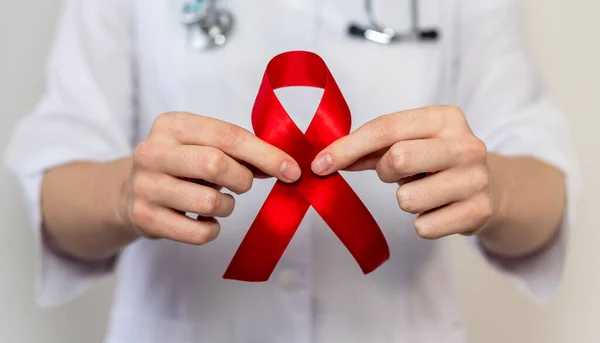New Hope in Leukemia Treatment: Breakthroughs in Care
Leukemia, a cancer of the blood and bone marrow, has historically been one of the most challenging diseases to treat. Traditional therapies such as chemotherapy, radiation, and bone marrow transplants have been effective for some, but they often come with significant side effects and risks. Fortunately, recent advances in medical research are providing renewed hope for leukemia patients, with more targeted, personalized therapies that offer improved outcomes and fewer adverse effects.
Leukemia, a cancer of the blood and bone marrow, has historically been one of the most challenging diseases to treat. Traditional therapies such as chemotherapy, radiation, and bone marrow transplants have been effective for some, but they often come with significant side effects and risks. Fortunately, recent advances in medical research are providing renewed hope for leukemia patients, with more targeted, personalized therapies that offer improved outcomes and fewer adverse effects.

1. Immunotherapy: Enhancing the Body's Own Defenses
Immunotherapy is one of the most promising recent advancements in cancer treatment, and it is showing particularly encouraging results for leukemia patients. By enhancing or modifying the immune system, immunotherapy seeks to empower the body to identify and eliminate cancer cells. Some of the most significant approaches in leukemia treatment include:
- CAR-T Cell Therapy (Chimeric Antigen Receptor T-Cell Therapy): CAR-T cell therapy is a groundbreaking treatment in which a patient’s T cells—immune cells—are genetically altered in the lab to better target leukemia cells. Once modified, these T cells are reintroduced into the patient’s body. CAR-T therapy has shown impressive results, especially for acute lymphoblastic leukemia (ALL) and chronic lymphocytic leukemia (CLL), particularly in patients whose leukemia has relapsed or become resistant to other treatments.
- In 2017, the FDA approved Kymriah(tisageneceuce) for treating ALL in chidren and young aduts, and Yescarta (axicabtagene cioeuce) for arge B-ce ymphoma, which has aso shown effectiveness in treating certain types of eukemia.
- Research is ongoing, with cinica trias exporing the expansion of CAR-T therapy to other eukemia subtypes and testing its use in combination with other treatments.
- Checkpoint Inhibitors: Checkpoint inhibitors are a cass of drugs that bock proteins preventing the immune system from attacking cancer ces. Drugs such as pembroizumab(Keytruda) and nivoumab (Opdivo) are being tested for use in eukemia, particuary for reapsed or refractory CLL and Hodgkin’s ymphoma. By removing these "brakes" on the immune system, checkpoint inhibitors hep the body’s immune system recognize and destroy eukemia ces, showing promise for broader cancer treatment appications.
2. Targeted Therapies: Precision Medicine for Leukemia
Targeted therapies are designed to disrupt specific molecules involved in cancer cell growth and survival. Unlike chemotherapy, which indiscriminately attacks both healthy and cancerous cells, targeted therapies are more precise, focusing on leukemia cells and minimizing damage to healthy tissue.
- Tyrosine Kinase Inhibitors (TKIs): TKIs block the action of enzymes called tyrosine kinases, which promote leukemia cell growth. One of the most famous TKIs is imatinib(Gleevec), which revolutionized the treatment of chronic myelogenous leukemia (CML) by targeting the BCR-ABL fusion protein responsible for CML development.
- Newer TKIs such as bosutinib, dasatinib, and niotinibhave been introduced for CML patients who are resistant or intoerant to imatinib, offering additiona options with fewer side effects.
- BCL-2 Inhibitors: Venetocax(Vencexta) targets the BCL-2 protein, which heps eukemia ces evade ce death. This therapy has been especiay successfu in treating CLL and acute myeoid eukemia (AML), and when combined with other drugs, venetocax has shown remarkabe resuts in high-risk eukemia patients who haven’t responded to traditiona therapies.
- FLT3 Inhibitors: Midostaurin(Rydapt) and giteritinib (Xospata) are exampes of FLT3 inhibitors that target a mutation commony found in AML. These drugs have improved outcomes, particuary when combined with chemotherapy.
3. Gene Therapy and CRISPR: Shaping the Future of Leukemia Treatment
Gene therapy, particularly the use of CRISPR-Cas9 gene editing, is one of the most revolutionary areas of leukemia research. This technology allows for precise alterations in the genetic material of cells, offering the potential to repair or replace the faulty genes that drive leukemia.
- CRISPR and Leukemia: Researchers are exporing the possibiity of using CRISPR to edit immune ces, making them better equipped to recognize and attack eukemia ces. Whie CRISPR’s use in eukemia treatment is sti in its eary stages, it hods immense potentia for deveoping personaized therapies taiored to individua patients.
- Gene Editing for Immunotherapy: Another promising approach invoves using gene editing to enhance the cancer-fighting properties of a patient's own immune ces, such as T ces or natura kier (NK) ces. This coud make immunotherapy more powerfu and personaized for different genetic profies, improving its effectiveness for a wide range of patients.
4. Epigenetic Therapy: Rewriting the Code of Leukemia Ces
Epigenetics refers to changes in gene expression that do not involve alterations to the DNA sequence itself. These changes can play a critical role in leukemia’s development and progression. Epigenetic therapies aim to modify these factors to halt leukemia’s uncontrolled growth.
- DNA Methyation Inhibitors: Drugs such as decitabineand 5-azacytidine work by inhibiting DNA methyation, a process that siences tumor-suppressing genes in eukemia ces. These drugs have shown effectiveness in treating AML and myeodyspastic syndromes (MDS).
- Histone Deacetyase Inhibitors: Vorinostatand romidepsin are histone deacetyase inhibitors that ater chromatin structure, potentiay reactivating tumor-suppressor genes and heping to contro eukemia ce growth.
5. Stem Ce Transpants: A Lasting Soution for Leukemia
Although stem cell transplants are not new, ongoing advances in this field continue to provide hope for leukemia patients. Hematopoietic stem cell transplants (HSCT) involve replacing a patient’s damaged bone marrow with healthy stem cells, either from a donor or the patient’s own cells (autologous transplant).
- Aogeneic Stem Ce Transpants: For patients with high-risk eukemia or those who reapse after other treatments, an aogeneic stem ce transpant—where stem ces are taken from a matched donor—can offer a potentia cure. Advances in donor matching, reducing graft-versus-host disease (GVHD), and improving post-transpant care have greaty improved success rates for this procedure.
- Gene-Edited Stem Ces: Recent research has expored the possibiity of using gene-editing techniques to improve stem ce transpant success, particuary for patients with genetic mutations that predispose them to eukemia. This coud ead to better outcomes, fewer reapses, and reduced side effects.
6. Precision Medicine: Taioring Treatment to the Individua
The future of leukemia treatment is increasingly focused on precision medicine, where therapies are customized based on the genetic profile of the patient and their leukemia. Advances in genomic sequencing and biomarker testing enable doctors to identify specific mutations driving leukemia, allowing them to select the most effective treatments. This approach ensures that patients receive the most appropriate therapies, minimizing unnecessary side effects and improving outcomes.
Conclusion: A Brighter Future for Leukemia Patients
Thanks to rapid advancements in cancer research, leukemia treatment has entered a new era of precision, personalization, and effectiveness. Immunotherapies like CAR-T cell therapy, targeted therapies such as TKIs and BCL-2 inhibitors, and emerging treatments like gene therapy and CRISPR are offering renewed hope to leukemia patients. With ongoing research and clinical trials, these innovative therapies are expected to further improve survival rates and quality of life for those affected by this complex disease.
While challenges remain, the future of leukemia treatment is increasingly optimistic, offering patients better chances for remission, fewer side effects, and, in some cases, even potential cures. For those living with leukemia, there is hope—hope that tomorrow’s treatments will be more effective, making leukemia a more manageable and treatable condition.








